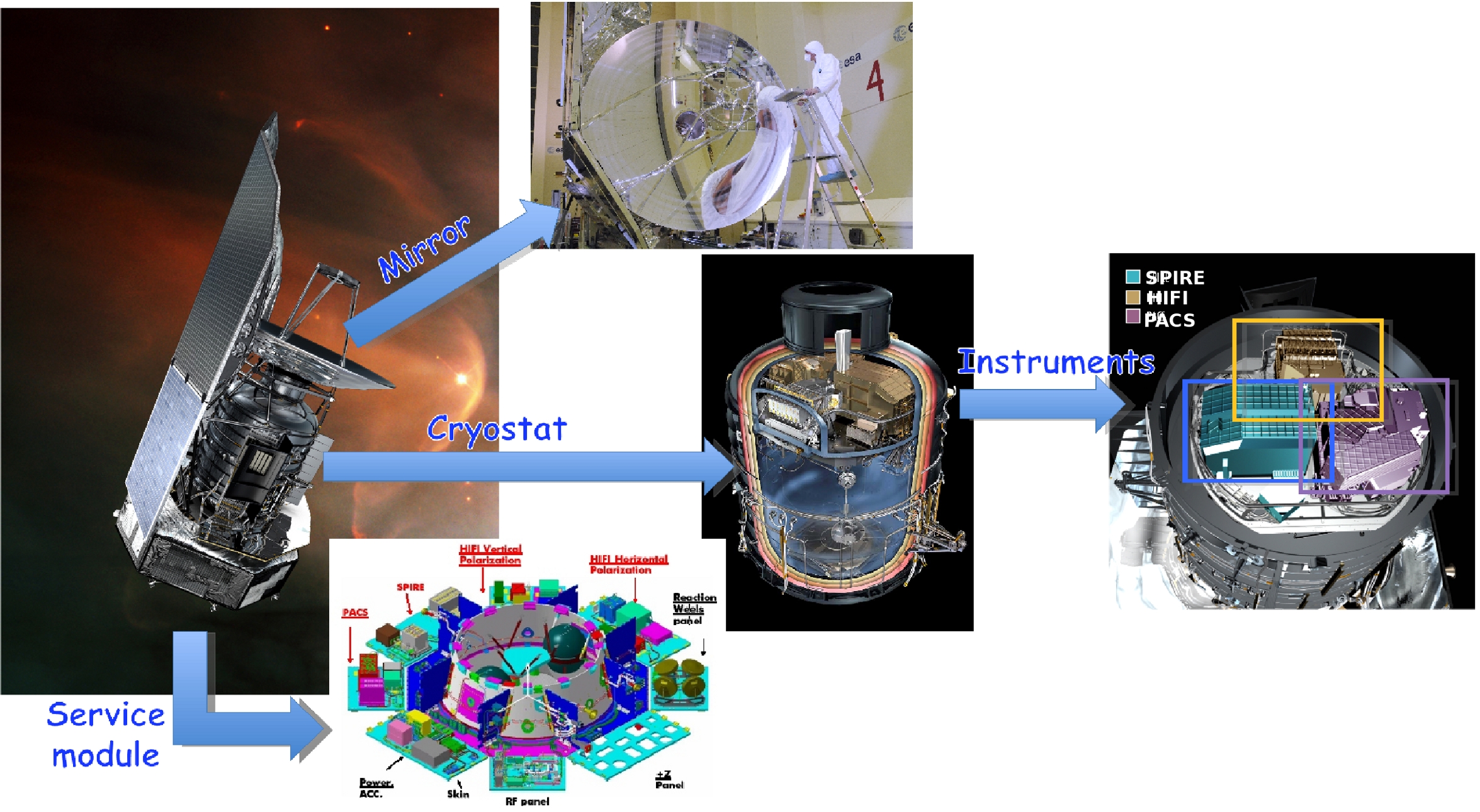
|
The Herschel Space Observatory
|
|
Herschel is an ESA cornerstone mission planned as a Space Observatory covering from the far infrared to sub-millimetre spectral domain.
Look at Herschel Mission Overview and Key Programmes presentation and paper. For a spreading of the Herschel Mission see the brochure. |
|
Herschel was launched on 14 May 2009
Herschel was successfully launched from the European Spaceport in Kourou (French Guiana) onboard an Ariane 5 ECA together with the Planck satellite. |
|
For further information about the Herschel Space Observatory, see the Spacecraft and Observatory Weg pages. |


